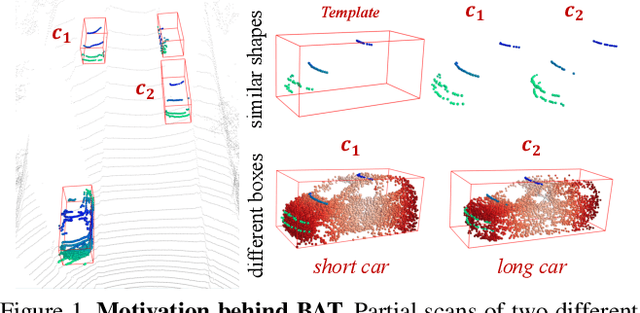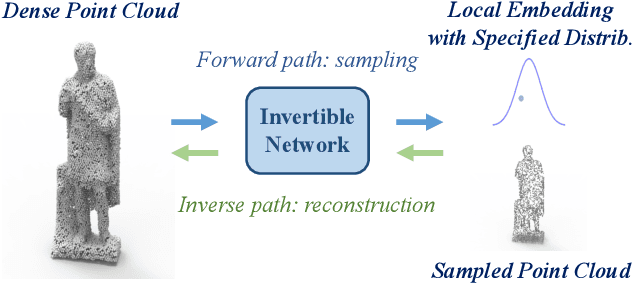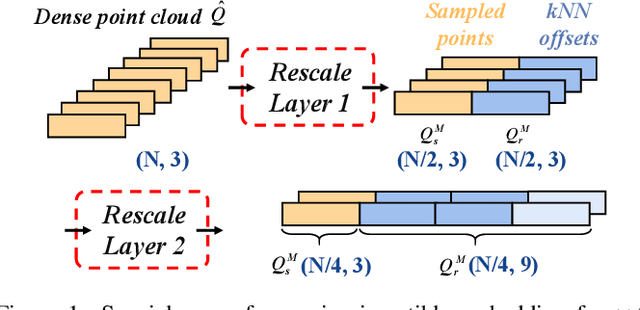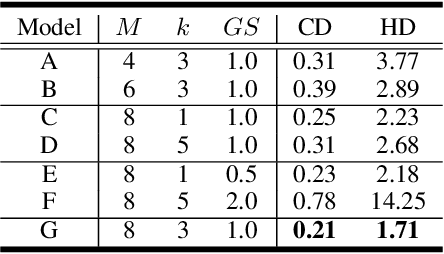Weibing Zhao
Block-Diagonal Guided DBSCAN Clustering
Mar 31, 2024Abstract:Cluster analysis plays a crucial role in database mining, and one of the most widely used algorithms in this field is DBSCAN. However, DBSCAN has several limitations, such as difficulty in handling high-dimensional large-scale data, sensitivity to input parameters, and lack of robustness in producing clustering results. This paper introduces an improved version of DBSCAN that leverages the block-diagonal property of the similarity graph to guide the clustering procedure of DBSCAN. The key idea is to construct a graph that measures the similarity between high-dimensional large-scale data points and has the potential to be transformed into a block-diagonal form through an unknown permutation, followed by a cluster-ordering procedure to generate the desired permutation. The clustering structure can be easily determined by identifying the diagonal blocks in the permuted graph. We propose a gradient descent-based method to solve the proposed problem. Additionally, we develop a DBSCAN-based points traversal algorithm that identifies clusters with high densities in the graph and generates an augmented ordering of clusters. The block-diagonal structure of the graph is then achieved through permutation based on the traversal order, providing a flexible foundation for both automatic and interactive cluster analysis. We introduce a split-and-refine algorithm to automatically search for all diagonal blocks in the permuted graph with theoretically optimal guarantees under specific cases. We extensively evaluate our proposed approach on twelve challenging real-world benchmark clustering datasets and demonstrate its superior performance compared to the state-of-the-art clustering method on every dataset.
Box-Aware Feature Enhancement for Single Object Tracking on Point Clouds
Aug 10, 2021



Abstract:Current 3D single object tracking approaches track the target based on a feature comparison between the target template and the search area. However, due to the common occlusion in LiDAR scans, it is non-trivial to conduct accurate feature comparisons on severe sparse and incomplete shapes. In this work, we exploit the ground truth bounding box given in the first frame as a strong cue to enhance the feature description of the target object, enabling a more accurate feature comparison in a simple yet effective way. In particular, we first propose the BoxCloud, an informative and robust representation, to depict an object using the point-to-box relation. We further design an efficient box-aware feature fusion module, which leverages the aforementioned BoxCloud for reliable feature matching and embedding. Integrating the proposed general components into an existing model P2B, we construct a superior box-aware tracker (BAT). Experiments confirm that our proposed BAT outperforms the previous state-of-the-art by a large margin on both KITTI and NuScenes benchmarks, achieving a 12.8% improvement in terms of precision while running ~20% faster.
PointLIE: Locally Invertible Embedding for Point Cloud Sampling and Recovery
Apr 30, 2021



Abstract:Point Cloud Sampling and Recovery (PCSR) is critical for massive real-time point cloud collection and processing since raw data usually requires large storage and computation. In this paper, we address a fundamental problem in PCSR: How to downsample the dense point cloud with arbitrary scales while preserving the local topology of discarding points in a case-agnostic manner (i.e. without additional storage for point relationship)? We propose a novel Locally Invertible Embedding for point cloud adaptive sampling and recovery (PointLIE). Instead of learning to predict the underlying geometry details in a seemingly plausible manner, PointLIE unifies point cloud sampling and upsampling to one single framework through bi-directional learning. Specifically, PointLIE recursively samples and adjusts neighboring points on each scale. Then it encodes the neighboring offsets of sampled points to a latent space and thus decouples the sampled points and the corresponding local geometric relationship. Once the latent space is determined and that the deep model is optimized, the recovery process could be conducted by passing the recover-pleasing sampled points and a randomly-drawn embedding to the same network through an invertible operation. Such a scheme could guarantee the fidelity of dense point recovery from sampled points. Extensive experiments demonstrate that the proposed PointLIE outperforms state-of-the-arts both quantitatively and qualitatively. Our code is released through https://github.com/zwb0/PointLIE.
* To appear in IJCAI 2021
 Add to Chrome
Add to Chrome Add to Firefox
Add to Firefox Add to Edge
Add to Edge